- Understanding The Art Of Content Relaunching
- Why Reviving Old Posts Matters
- Benefits Of Content Relaunching
- Steps To Effectively Revive Old Posts
- Identifying The Right Content For Relaunch
- Updating And Enhancing Existing Content
- Adding New Visuals And Interactive Elements
- Optimizing For SEO And Keywords
- Promoting The Relaunched Content
- Tools And Resources To Aid Content Relaunching
- Analytics Tools To Find Potential Posts
- Content Update And Optimization Tools
- Measuring The Success Of Relaunched Content
- Key Metrics To Track
- Adjusting Your Strategy Based On Performance
- Conclusion
- Frequently Asked Questions
- What is content relaunching?
- Why should I relaunch my old blog posts?
- How do I identify blog posts worth relaunching?
- What are the key steps to relaunch content?
- Which SEO best practices should I apply during content relaunching?
- What tools can help with content relaunching?
- How do I enhance user engagement after relaunching content?
- Does relaunching guarantee better search rankings?
- How can I measure the success of content relaunching?
- Can even low-performing posts benefit from content relaunching?
Your old blog posts might be packed with value, but over time, they can get buried under fresh content and lose their shine. Instead of letting them fade into obscurity, why not give them a second chance to thrive? Content relaunching is the perfect way to breathe new life into your existing posts and attract a fresh wave of traffic.
By updating outdated information, optimizing for current SEO trends, and tweaking your presentation, you can turn forgotten content into a powerful traffic magnet. It’s not just about recycling—it’s about reimagining your posts to meet today’s audience needs. With the right strategy, your old content can work harder and smarter for you.
Understanding The Art Of Content Relaunching
Content relaunching involves strategically revamping older posts to boost their relevance and searchability. It focuses on aligning your content with current user interests, SEO standards, and industry trends. Instead of creating entirely new material, you improve upon existing assets to maximize their potential.
Identify underperforming posts by analyzing metrics like traffic, backlinks, or engagement. For instance, use tools such as Google Analytics to find articles with declining or stagnant views. These posts often hold value but need adjustments to make them more appealing.
Update outdated information to reflect current insights. Replace old statistics or references with current data from credible sources. For example, revise articles featuring marketing trends from 2020 with the latest data for 2023.
Enhance presentation by optimizing layout, visuals, and formatting. Add high-quality images, infographics, or videos to break text monotony. Ensure content readability by using headers, bullet points, and concise paragraphs.
Boost search rankings by applying modern SEO principles. Incorporate trending keywords, meta descriptions, and internal links. For instance, if a post ranks for “social media strategies,” explore related keywords to expand its reach.
Promote revised content to new audiences across platforms. Share updates on social media, email newsletters, or forums. Highlight what’s new in your post to attract attention from both loyal followers and fresh readers.
Why Reviving Old Posts Matters
Reviving old posts improves the visibility and relevance of your content in today’s competitive digital landscape. It transforms stagnant content into valuable assets that drive traffic and engagement.
Benefits Of Content Relaunching
- Increased Organic Traffic
Updated posts aligned with current SEO practices rank higher in search engines. Improved rankings lead to higher click-through rates and organic visibility.
- Enhanced User Engagement
Adding new insights and visuals makes your content more engaging. Readers find value in refreshed articles, increasing time spent on your site.
- Cost-Effective Strategy
Repurposing existing content takes less effort and resources than creating new posts. It’s an efficient way to maximize the value of past work.
- Relevance To Current Trends
Adjusting outdated posts keeps your content aligned with evolving trends. Readers appreciate current and accurate information.
- Opportunities For Backlinks
High-quality, updated posts are more likely to attract backlinks. These links improve domain authority and boost overall search engine performance.
- It Only Involves Minor Edits
Some believe content updating is superficial. In reality, relaunching requires a thorough review with updated data, new visuals, and SEO refinement.
- Search Engines Penalize Revived Content
Search engines reward updated posts with better rankings, provided you improve the content quality and retain original URLs.
- It’s A Once-And-Done Process
Content needs regular optimization as trends change. Adjust your posts periodically for sustained relevance and performance.
- It Doesn’t Work For Low-Traffic Posts
With strategic reworking, underperforming posts can rank higher. Use analytics to identify such posts and implement targeted updates.
- New Content Always Performs Better
Old content with an established history often has more authority. Relaunching capitalizes on this while incorporating modern optimizations.
Steps To Effectively Revive Old Posts
Reviving old posts involves strategic planning and precise execution to deliver measurable results. By focusing on targeted updates and thoughtful promotion, you can transform outdated content into traffic-driving assets.
Identifying The Right Content For Relaunch
Analyze your website’s performance metrics to identify underperforming posts with potential. Focus on posts with historical traffic peaks, moderate search rankings, or trending relevance. Use tools like Google Analytics or SEMrush to pinpoint posts with optimization gaps affecting visibility.
Updating And Enhancing Existing Content
Refresh outdated information to align with current facts and industry changes. Replace broken links with authoritative sources, update statistics with credible data, and rewrite sections to improve clarity or relevance. Expand content with new sections if recent developments support the topic.
Adding New Visuals And Interactive Elements
Incorporate visuals to enhance content appeal and user engagement. Embed infographics, high-quality images, or updated charts to provide visual context. Introduce interactive elements like polls or videos to encourage prolonged user interaction and improve engagement rates.
Optimizing For SEO And Keywords
Research current keywords using tools like Ahrefs or Ubersuggest to replace obsolete terms in your content. Incorporate focus keywords naturally into headers, subheaders, and metadata. Ensure mobile-friendly formatting and improve page speed to maintain search engine compatibility.
Promoting The Relaunched Content
Share updated posts across relevant platforms to maximize visibility and drive traffic. Distribute links through email newsletters, social media campaigns, and industry forums. Highlight new updates to entice returning readers while attracting a fresh audience.
Tools And Resources To Aid Content Relaunching
Using the right tools can streamline your content relaunch efforts, helping you identify opportunities and efficiently optimize your posts. Below are essential resources categorized for analytics and content optimization.
Analytics Tools To Find Potential Posts
Analytics tools enable you to evaluate the performance of existing content and prioritize efforts on underperforming posts with potential.
- Google Analytics: Tracks traffic metrics like pageviews and session duration, helping you identify posts with high impressions but low engagement.
- Google Search Console: Pinpoints keywords and pages with declining rankings, ideal for targeting relaunch opportunities.
- SEMrush: Analyzes backlink profiles and organic keyword rankings, highlighting posts that can gain traction with strategic updates.
- Ahrefs: Provides detailed insights into content gaps and search performance, helping you find growth areas for existing pages.
Content Update And Optimization Tools
Content optimization tools assist in updating text, visuals, and SEO elements, ensuring your revamped posts align with modern best practices.
- Yoast SEO: Evaluates readability and SEO factors, offering recommendations to improve your post’s optimization level.
- Grammarly: Ensures your content is free from grammar and spelling errors, enhancing credibility and readability.
- Canva: Simplifies the creation of engaging visuals and infographics, crucial for increasing user interaction on relaunches.
- Surfer SEO: Aligns your content with the current keyword landscape, providing recommendations for word count, structure, and semantics.
- Broken Link Checker: Identifies and replaces outdated links, maintaining site credibility and user experience.
Measuring The Success Of Relaunched Content
Tracking success is essential to evaluate the impact of relaunching efforts. Analyzing specific metrics and adapting strategies can help maximize traffic and engagement.
Key Metrics To Track
Focus on measurable indicators to determine content performance.
- Traffic Volume: Compare page views and user sessions before and after the relaunch. Use Google Analytics to pinpoint growth.
- Bounce Rate: Check if users engage more by measuring reduced bounce rates.
- Engagement Metrics: Monitor time on page, comments, and social shares to gauge audience interaction.
- Keyword Rankings: Analyze changes in search engine rankings for targeted keywords using tools like SEMrush.
- CTR (Click-Through Rate): Inspect CTR on search results pages via Google Search Console to assess improved visibility.
- Conversions: Evaluate lead generation, purchases, or other defined goals attributed to the content.
Adjusting Your Strategy Based On Performance
Refine your approach if results don’t align with expectations.
- Increase Relevance: Add more context-specific updates if engagement or CTR falls short.
- Improve SEO: Reassess keyword optimization, meta descriptions, and title tags if rankings remain stagnant.
- Enhance Visual Appeal: Add visually engaging imagery or interactive content if bounce rates stay high.
- Utilize Feedback: Address audience feedback in comments or messages to improve content relevance.
- Expand Distribution Efforts: Promote on unexplored platforms or through email marketing to reach broader audiences.
Evaluate metrics regularly to ensure continuous improvement and sustained traffic gains.
Conclusion
Reviving old content isn’t just a strategy—it’s an opportunity to unlock hidden potential within your blog. By taking a thoughtful approach to updating, optimizing, and promoting your posts, you can breathe new life into them and drive meaningful results.
Every piece of content you’ve created holds value, and with the right adjustments, it can continue to serve your audience while boosting your blog’s performance. Embrace content relaunching as a smart, sustainable way to stay relevant and grow your reach in an ever-evolving digital landscape.
Frequently Asked Questions
What is content relaunching?
Content relaunching refers to the process of updating and optimizing old blog posts to make them relevant to current trends, SEO standards, and audience interests. It involves refreshing outdated information, improving visuals, and enhancing the overall presentation to generate more traffic and engagement from existing content.
Why should I relaunch my old blog posts?
Relaunching old posts can increase organic traffic, improve search rankings, enhance user engagement, and maximize the value of your past work. It’s a cost-effective strategy to breathe new life into underperforming content and transform it into a valuable asset.
How do I identify blog posts worth relaunching?
Use analytics tools like Google Analytics or SEMrush to find underperforming posts with historical traffic peaks or relevance to trending topics. Focus on content with outdated information, broken links, or areas for optimization and improvement.
What are the key steps to relaunch content?
Key steps include analyzing post performance, updating outdated information, fixing broken links, expanding content, enhancing visuals, incorporating modern SEO practices, and ensuring mobile-friendly formatting. Finally, promote the updated content across platforms to maximize visibility.
Which SEO best practices should I apply during content relaunching?
Optimize for relevant, high-traffic keywords, improve meta descriptions, ensure proper use of headers and ALT tags, enhance internal and external linking, and focus on mobile-friendly content formatting. Use tools like Yoast SEO or Surfer SEO to guide updates.
What tools can help with content relaunching?
Tools like Google Analytics, Google Search Console, SEMrush, Ahrefs, Grammarly, Canva, and Broken Link Checker assist in performance tracking, SEO optimization, and improving visuals and content quality during relaunching.
How do I enhance user engagement after relaunching content?
Update visuals using better graphics or infographics, add interactive elements, improve readability with a clean layout, and ensure the information is valuable, actionable, and aligned with current trends. Promote revised content to reach your audience effectively.
Does relaunching guarantee better search rankings?
While relaunching significantly improves your chances of ranking higher, success depends on the quality of updates, proper SEO integration, and relevance to user intent. Search engines reward content that is fresh, optimized, and valuable to users.
How can I measure the success of content relaunching?
Track metrics such as traffic volume, keyword rankings, bounce rate, time on page, click-through rates, and conversions. Use tools like Google Analytics and Search Console to monitor improvements and make data-driven decisions for further optimization.
Can even low-performing posts benefit from content relaunching?
Yes, even low-traffic posts can benefit from updates. Older posts often have existing authority, and with strategic reworking, you can align them with modern SEO standards and trends, giving them more potential to attract both new and existing readers.












